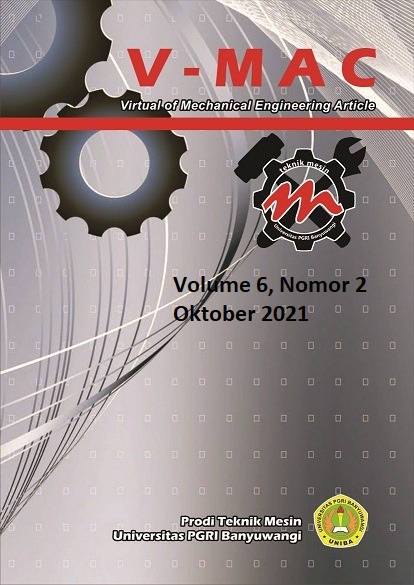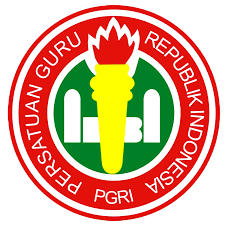Pengaruh Pola Pemasangan dan Rasio Dimensi Propeller Terhadap Unjuk Kerja Perahu Tipe Penggerak Contra Rotation Propeller
DOI:
https://doi.org/10.36526/v-mac.v6i2.1516Abstract
The propeller is an important part of the ship's propulsion installation. Differences in propeller design can
affect the propulsion performance of the ship. This study aims to determine the effect of variations in
dimension ratio and propeller installation pattern on the performance of the contra rotation propeller type
boat. The research was carried out experimentally by using variations of three-dimensional propeller ratios
including R1 (1:1); R2 (1:1/2) and R3 (1:1/4), while the pattern of placement of the shaft tilt angle includes
15
o
and 20
o
. The flow pattern is conditioned with the waveless and wavy flow. Data collection includes boat
speed and visualization of fluid flow behind the propeller which is then analyzed to obtain performance
characteristics for each variation used. The results showed that the dimension ratio and the pattern of
contra rotation propeller installation affected the speed and thrust of the boat, where the optimum power
was obtained at the variation of the ratio R2 at a shaft tilt angle of 15
o
with the provision of a water flow
mechanism without waves resulting in a speed of 0.576923 cm/second and under conditions of wavy at
0.523256 cm/second. The greatest thrust occurs in conditions of water flow without waves at the variation
of the ratio R
2 with a value of 33.23 kN and in wavy conditions of 30.13 kN. Visualization of fluid flow
behind the shaft has shown the performance of the contra rotation propeller in various variations given
through changes in the shape and length of the resulting path .
Keywords: dimension ratio, installation pattern, contra rotation propeller, boat
performance
Downloads
Published
How to Cite
Issue
Section
License
uthors who publish with this journal agree to the following terms:
1. Copyright on any article is retained by the author(s).
2. The author grants the journal, the right of first publication with the work simultaneously licensed under a Creative Commons Attribution License that allows others to share the work with an acknowledgment of the work’s authorship and initial publication in this journal.
3. Authors are able to enter into separate, additional contractual arrangements for the non-exclusive distribution of the journal’s published version of the work (e.g., post it to an institutional repository or publish it in a book), with an acknowledgment of its initial publication in this journal.
4. Authors are permitted and encouraged to post their work online (e.g., in institutional repositories or on their website) prior to and during the submission process, as it can lead to productive exchanges, as well as earlier and greater citation of published work.
5. The article and any associated published material is distributed under the Commons Attribution 4.0 International License.





















